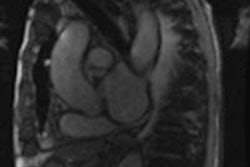
Thousands of x-rays and other scans have been reviewed and hundreds of patients recalled after errors were discovered in the work of three locum radiologists employed by the Irish Health Service Executive (HSE), according to an article published by the Irish Times on 30 April. But a senior radiologist in Dublin is questioning some aspects of the report.
At least one patient had a late cancer diagnosis as a result of the alleged mistakes, and the review is continuing, according to the Irish Times. The three locum radiologists, none of whom is working in the Republic of Ireland anymore, have been reported to the Medical Council. The issues with their work allegedly came to the attention of the HSE after medical colleagues raised concerns.
The three locums worked at Kerry General Hospital, Cavan Monaghan Hospital, and Bantry General Hospital, the newspaper article stated. The locum radiologist who worked in Bantry went on to work in Our Lady of Lourdes Hospital Drogheda, Connolly Hospital in Blanchardstown, Wexford General Hospital, and Roscommon Hospital.
The most affected hospital is Bantry, where 4,388 scans and x-rays examined between May and September 2013 have been reviewed. Fifty patients were recalled, and while most did not suffer any adverse outcome, one had a delayed cancer diagnosis.
In Cavan Monaghan Hospital, 2,980 examinations performed by a locum radiologist had to be re-examined after concerns were raised. The hospital recalled 62 patients but says none has suffered any serious adverse outcomes. At Kerry General, six patients were recalled after the work of another locum radiologist who worked there for a month in 2013 was reviewed. The HSE said no "harm events" occurred, according to the Irish Times.
Because the radiologist who worked in Bantry was also employed for short periods in Drogheda and Connolly, reportedly both are carrying out preliminary audits of his work to see if x-rays were correctly assessed. The same radiologist worked in Wexford and Roscommon, where management said they are satisfied that no patient safety concerns were identified. In February, it emerged that hundreds of patients who underwent colonoscopies at Wexford General were recalled due to concerns raised about the quality of procedures.
The problems highlight the dangers arising from the heavy reliance on temporary staff to fill vacant posts, the Irish Times continued.
"The doctors involved will often have moved on before mistakes are spotted, potentially exposing the health service to expensive litigation further down the line," the newspaper stated.
Lack of context?
However, Dr. Leo Lawler, a consultant radiologist at Mater Misericordiae University Hospital in Dublin, is concerned about the lack of context in the newspaper article.
"We know nothing about the process or the background. We know nothing about the volumes, complexity, and resources locally as well as the practice conditions. We know nothing about comparisons to practice standards," he told AuntMinnieEurope.com in an email. "The limited data alone does not correlate with an individual being reviewed by a regulatory body, and if it does, radiologists need to be very concerned."
 Media reports are a vital part of radiologists' conversation with their public, said Dr. Leo Lawler.
Media reports are a vital part of radiologists' conversation with their public, said Dr. Leo Lawler.The Irish health service has survived due to the personal and professional commitment and sacrifice of locum consultants, even though a nonpermanent radiologist post has many limitations for the post-holder and hospital, nor is locums work the optimal working condition for families, stated Lawler, who is a member of AuntMinnieEurope.com's editorial advisory board. The Irish Times article seems to suggest that being a locum and not being from an established jurisdiction implies lower quality, but this is a broad generalization that is unfair to locums, he commented.
Overall, the article reflects the communication pathway that seems to be the standard operating procedure for Ireland, he continued.
"Those in healthcare and even in the specialty hear about it first in the print media. We shall never be given the details of the root cause analysis, investigation, or outcome," he wrote. "If there are practice recommendations from the service or regulatory authority, we shall not get them either. Certainly if the individuals are 'cleared,' we shall never hear about that or a critique of the process that brought them to attention."
The bottom line is that more articles like this are needed because they raise legitimate concerns about healthcare practice, but they need to be better written and a vital part of radiologists' conversation with their public, noted Lawler.
Radiology shortages in Ireland were identified in 2010 by the Hayes Report into Tallaght Hospital, where a large number of radiology examinations were not reported and there were some delays in patient diagnosis. In point eight of the study, the Hayes Report recommended role expansion for other disciplines (e.g., radiographers should report plain films, as happens in the U.K.) and improved radiology workflow, but this suggestion has not been acted on in the five years since the report was published.
Other examples highlight the importance of audit, continuing medical education, and quality control in Irish radiology (see Irish Times, 30 July 2008). New legal requirements came into force in 2011, but arguably some element of external monitoring is required.



















